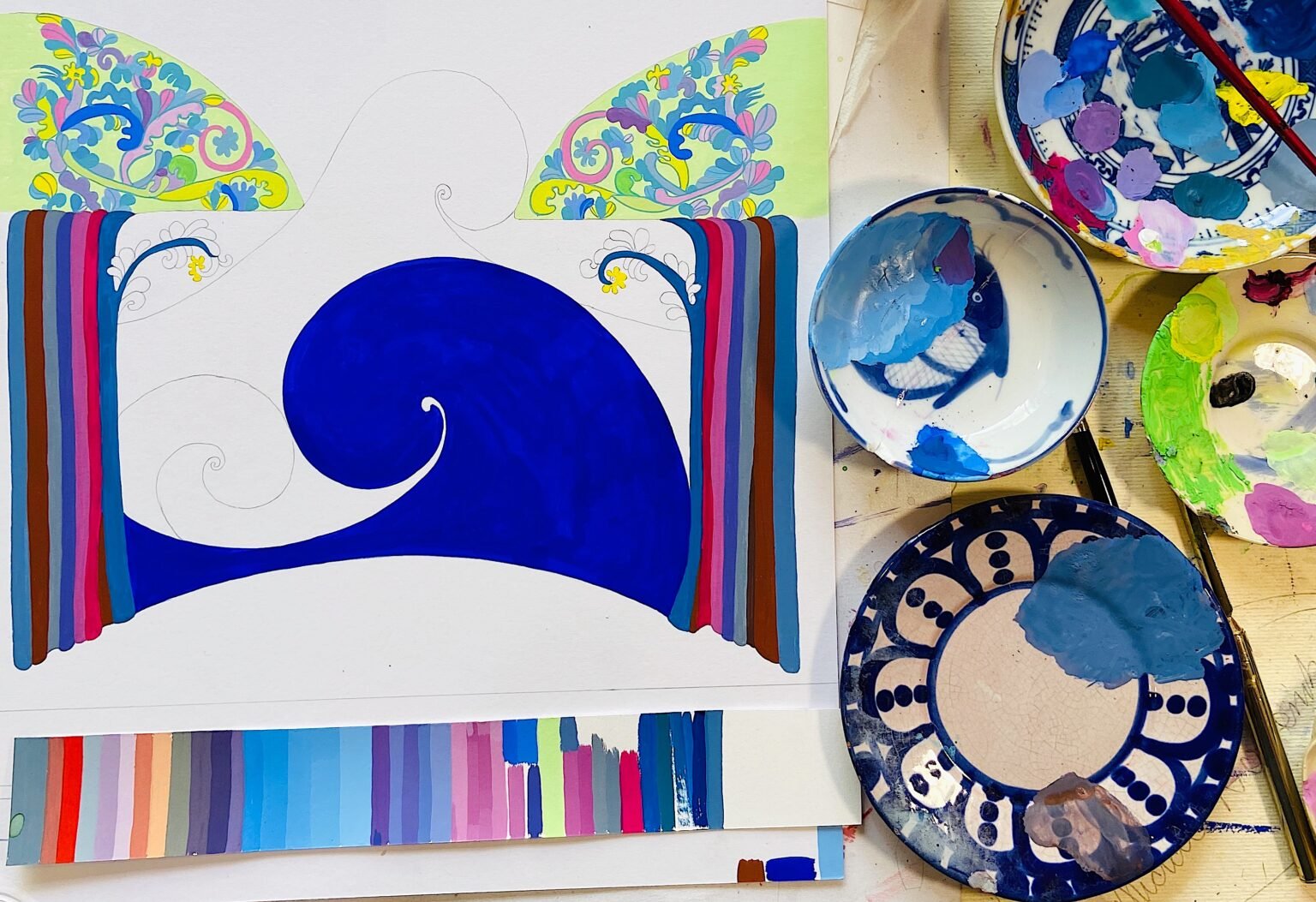Colour Theory: Interview with Jean
Right after graduating from the College of Art of Portsmouth, Jean worked as a window display artist and she taught a class about Colour Theory at the College of Art night school.
Anthinula: What is Colour Theory?
JEAN: It’s about how combining colours has an effect on our visual perspective. When certain colours are placed next to each other, they can complement or contrast one another.
Anthinula: How influential is Colour Theory in your painting?
JEAN: Very important. It made me aware of why I was drawn to particular combinations of colour. I prefer to work with very vibrant and bright colours, and Colour Theory works with all tones. After decades of painting, it's no longer something I do consciously. I know when I combine vermillion red next to indigo blue that it works, although there are still times when I mix certain colours and I realise that they're in discord. I tend to make mistakes when I overthink things and that's when I have to start a painting over, so I try to follow my instinct. I really believe that often it is our inner instinct that knows when colours are harmonious.
Anthinula: Why is Colour Theory important?
JEAN: I think it's important because complementary colours create harmony and that is something that our eyes and our subconscious are drawn to. It creates well-being. We can also enjoy colours that contrast and catch our attention, but that is more of a stimulation, or thought-provoking experience, rather than creating an element of inner serenity and even joy.
It's no coincidence why certain artists are enjoyed all over the world, no matter what the culture. Giotto and Piero della Francesca understood the power of colour as did the Impressionists and Post-Impressionists, such as Gaugin and Van Gogh, and then later on Matisse. When I lived in South Korea, I was very drawn to Korean Folk Art, which is based on complementary primary colours. To be honest, I doubt the traditional artisans studied Colour Theory, but they had an inborn instinct, like many artists.
Anthinula: What about us mere mortals?! How do we incorporate Colour Theory into our creative projects and homes in order to create more harmony?
JEAN: First of all, don't follow any rules. Whatever makes you happy in your home is the secret. Create or buy artwork because you love to look at it and because it makes you feel good. If you are partial to certain colours that when combined create discord, then work with different tones. If you love green and orange, but together they don't quite work, then choose different shades of green, such as secondary and tertiary colours.
For example, an apple green and a much more intense shade of orange can work together. Or choose one colour that pleases you and experiment with the varying tones of a second and/or a third colour until you find the right hues which all fit together. Often, two colours will work together because of the introduction of other colours into the interior design or whatever you’re creating.
Anthinula: Any other words of wisdom regarding Colour Theory?
JEAN: It always amazes me how nature never gets it wrong. It's a wonderful landscape for inspiration, especially when you're experimenting with combining colours. Last spring, I had gorgeous dark orange lilies and violet iris' growing next to each other, in between vivid lavender and dark green bushes of rosemary. A magnificent combination.
For more about Jean's artwork visit www.jeantoriartwork.com


